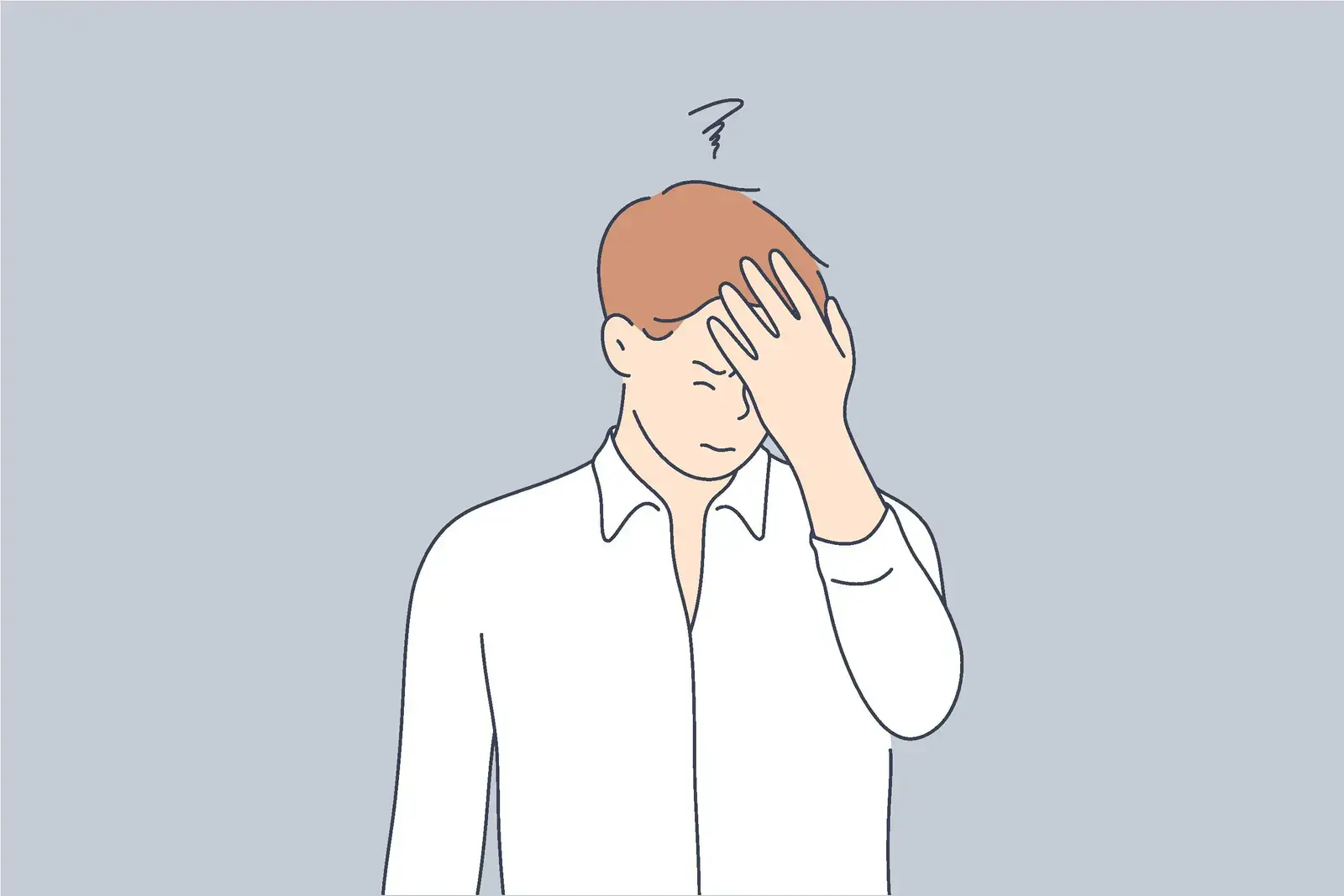
Can You Take Klonopin for Life? Drug Facts, Risks, and More
Key Points
- Klonopin, or clonazepam, is a benzodiazepine medication used for seizure and panic disorders.
- The majority of physicians recommend Klonopin for short-term use only, and data on long-term effects are limited.
- Klonopin may be used with careful supervision on a long-term basis, but this increases the risk of withdrawal and serious side effects.
It’s not generally recommended to take Klonopin for life but no two patients are exactly the same, regardless of similar underlying concerns. However, if we had to give a one-word answer to the question, that answer would be no.
Medical experts are virtually unanimous in their discouragement of lifelong use of Klonopin due to a range of significant long-term risks. These issues include dependence, tolerance, and potentially serious withdrawal symptoms in some cases.
Klonopin is a highly effective benzodiazepine that offers significant relief for many with anxiety, panic attacks, and seizures. But Klonopin is ideally meant to be a short-term medication used for acute symptom management.
What Is Klonopin?
Klonopin is made with clonazepam, a benzodiazepine drug with powerful, long-acting effects. Clonazepam is an agonist at GABA-A receptors.[1] This means it stimulates these cell receptors in the brain, which in turn decreases the excitability of neurons. This calming effect is further enhanced by clonazepam’s ability to increase serotonin activity.
Medical Applications of Klonopin
Klonopin is most commonly prescribed for the acute treatment of panic disorder, seizure disorders, and acute mania.[2] This drug can also improve symptoms in a broader range of conditions, including:[3]
- Restless leg syndrome
- Bruxism (grinding teeth)
- Sleep behavior disorder
- Akathisia (a movement disorder)
How Klonopin Promotes a Calming Effect
Like other benzodiazepines, Klonopin increases GABA-A activity by keeping chloride channels open for an extended period, which reduces the excitability of neurons.[4]
Legal Status and Scheduling
Drug Enforcement Administration (DEA) “scheduling” refers to a five-tiered system the administration uses to categorize drugs according to their abuse potential and corresponding medical utility.
Substances in category I are considered highly addictive (and not medically useful), while substances in category V have a low abuse potential with moderate or high medical usefulness.
Klonopin, or clonazepam, is classified as a Schedule IV substance.[5] This means it has some potential for abuse and dependence, but can be effective for symptom management when used with caution under medical supervision.
How Long Can Klonopin Be Taken Safely?
Due to a lack of robust study data on the long-term effects of Klonopin, restrictions against long-term applications are vague.
The current knowledge base provides some insights into the possible consequences of exceeding the nine- or ten-week mark of Klonopin use, but further investigation is needed. Some physicians may still use Klonopin for extended periods of time with close monitoring.
FDA Guidelines on Klonopin Duration
Per the FDA, the effectiveness of Klonopin beyond the nine-week mark “has not been systematically studied in controlled clinical trials.”[6] Two six- to nine-week trials were used to determine the drug’s effectiveness for patients with panic disorders.
There have been trials investigating the effects of multiple antiepileptic drugs (including Klonopin) on suicidal behaviors for twelve weeks or longer, but these do not align directly with the FDA-indicated use of Klonopin.[7]
Understanding Risk Factors
Providing a universal prescription for the ideal Klonopin usage duration is not possible. Every patient presents a unique set of circumstances that can alter how they respond to the drug, including their risk of experiencing certain side effects.
These circumstances include, but are not limited to:
- Individual medical history and current health status
- Underlying condition being treated (seizures vs. anxiety)
- Response to alternative treatments
- Risk of withdrawal complications
Discussing your individual risk factors with a physician is the best way to safely establish a medication regimen that includes Klonopin.
Long-Term Klonopin Risks and Complications
Though data is limited, research has established some of the long-term risks associated with Klonopin use. Most of these risks increase as Klonopin use is continued.
Physical Dependence and Tolerance
The FDA recommends “careful surveillance” of addiction-prone patients given Klonopin due to the possibility of physical and psychological dependence.[8] Over time, the body will develop a tolerance to Klonopin, requiring higher and higher doses to achieve the same therapeutic effects.
Dependence risk is also demonstrated by the potential for withdrawal symptoms that occur after abruptly stopping Klonopin use. These symptoms include hallucinations, abdominal cramps, convulsions, insomnia, and others.[9]
Tapering off of Klonopin under careful medical supervision dramatically decreases your risk of experiencing withdrawal symptoms.
Cognitive and Mental Effects
Long-term benzodiazepine use has been linked to concerning cognitive changes. One study of these effects found that patients taking benzodiazepines for extended periods of time were “consistently more impaired than controls” across the twelve cognitive categories that were measured.[10]
This means that long-term benzodiazepine use is likely to impair key mental faculties like memory, concentration, decision-making ability, speech, and more.
Drug-Drug Interactions
Klonopin can slow or stop your breathing, especially if you have recently used an opioid medication, alcohol, or other drugs that can slow your breathing.[11] These potentially fatal interactions become more dangerous with long-term use, as tolerance may lead to higher doses.
Additional drug-drug interactions related to Klonopin include severe central nervous system depression or death when combining with kratom, and increased sedation when combining with antiepileptic drugs.[12]
Drugs that compete for or inhibit the activity of the liver enzymes responsible for breaking down Klonopin (CYP3A4) may impair its metabolism, thereby lengthening the window during which harmful drug interactions can occur.
Alternatives to Lifelong Klonopin Use
Patients who need to manage chronic symptoms may be encouraged to consider alternatives to long-term Klonopin use, though the drug may still be used intermittently.
The effectiveness of alternative (and/or complementary) treatment methods varies according to the underlying condition(s) being treated and other factors.
Non-medication approaches to anxiety disorders include cognitive behavioral therapy (CBT), which shows strong long-term outcomes. CBT helps patients identify and change harmful thought patterns.
Exposure therapy is commonly used for PTSD and phobias, and mindfulness and relaxation techniques help with general anxiety symptoms to a limited extent.[13] This process exposes the patient to ideas, places, and more associated with the catalyst of their trauma.
Finally, activity modifications such as exercise, sleep hygiene, and stress-reducing schedule changes can sustainably improve symptoms without the adverse effects of benzodiazepines like Klonopin.
Alternative medications used to treat anxiety disorders include:
- Serotonin-Norepinephrine Reuptake Inhibitors (SNRIs) and Selective Serotonin Reuptake Inhibitors (SSRIs)
- BuSpar or Busprione (antianxiety medication)
- Some anticonvulsant medications
While these medications all come with their own risks, they typically carry a lower risk of dependence and an improved overall safety profile.
Tapering Strategies
If you have been taking Klonopin for a long period, you should work closely with your healthcare provider or an addiction specialist to establish a taper schedule, as withdrawal symptoms can be severe if stopped abruptly.
A medically supervised taper typically involves:
- Gradual dose reduction over weeks or months
- Careful monitoring for withdrawal symptoms
- Support for anxiety management during the process
- Possible substitution with longer-acting benzodiazepines during tapering
When Professional Help Is Needed
Seek immediate medical attention for:
- Overdose symptoms: extreme drowsiness, confusion, muscle weakness, or difficulty breathing
- Severe withdrawal: hallucinations, extreme agitation, psychosis, tremors
- Suicidal thoughts or severe depression
- Inability to reduce or stop despite wanting to
For those struggling with Klonopin dependence, professional addiction treatment offers comprehensive support. Treatment programs typically include:
- Medical detoxification with proper withdrawal management
- Therapy and counseling to address underlying anxiety or other mental health conditions
- Medication management to find safer alternatives
- Ongoing support for long-term recovery
Treatment doesn’t mean giving up effective anxiety management. Instead, it means finding safer, more sustainable approaches to mental health.
Find the Support You Need
Can you take Klonopin for life? In less common circumstances, treatment-resistant conditions might benefit from long-term Klonopin use, but with strict medical supervision. This represents the exception rather than the rule.
Regardless of how long you take Klonopin, if you fear you’ve developed a dependence or are actively undergoing withdrawal, professional detox and rehabilitation services are here to help you achieve the best possible outcome.
If you need help, delaying your decision will only increase the potential for serious side effects to take hold. Find professional rehab services today and achieve a full recovery in a safe and sustainable way.
Frequently Asked Questions About Long-Term Klonopin Use
Can stopping Klonopin cause seizures?
Yes, abrupt discontinuation can trigger withdrawal seizures, even in people without epilepsy. This risk increases with longer use and higher doses. Medical supervision is essential when stopping Klonopin.
How long does Klonopin stay in your system?
Klonopin has a long half-life of approximately 30-40 hours, meaning it can remain detectable for several days to weeks, depending on the duration of use and individual factors.[14]
Is it safe to take Klonopin with antidepressants?
Many people safely combine Klonopin with antidepressants under medical supervision. However, this combination requires careful monitoring for side effects and drug interactions.
What happens if you take Klonopin for years?
Long-term use increases risks of physical dependence, cognitive impairment, tolerance, and difficult withdrawal. Some people experience persistent effects even after stopping the medication.
Are there any benefits to long-term Klonopin use?
For certain seizure disorders, long-term use may be necessary and beneficial. However, for anxiety disorders, most experts recommend exploring alternatives due to the risk-benefit profile changing over time.
Sources
[1][2][3][11][12][14] Basit H, Kahwaji CI. Clonazepam. [Updated 2023 May 13]. In: StatPearls [Internet]. Treasure Island (FL): StatPearls Publishing; 2025 Jan-. Available from: https://www.ncbi.nlm.nih.gov/books/NBK556010/
[4] Greenblatt, D. J., & Miller, L. G. (n.d.). Mechanism of the anticonvulsant action of benzodiazepines. Cleveland Clinic Journal of Medicine. https://www.ccjm.org/content/ccjom/57/1_suppl_1/S-6.full.pdf
[5][6][7][8][9] NDA 017533 Klonopin (clonazepam) tablets. AccessData.FDA. (n.d.-a). https://www.accessdata.fda.gov/drugsatfda_docs/label/2013/017533s053,020813s009lbl.pdf
[10] Barker, M. J., Greenwood, K. M., Jackson, M., & Crowe, S. F. (2004). Cognitive effects of long-term benzodiazepine use: a meta-analysis. CNS Drugs, 18(1), 37–48. https://pubmed.ncbi.nlm.nih.gov/14731058/
[13] McLean, C. P., Levy, H. C., Miller, M. L., & Tolin, D. F. (2022). Exposure therapy for PTSD: A meta-analysis. Clinical Psychology Review, 91, 102115. https://pubmed.ncbi.nlm.nih.gov/34954460/


